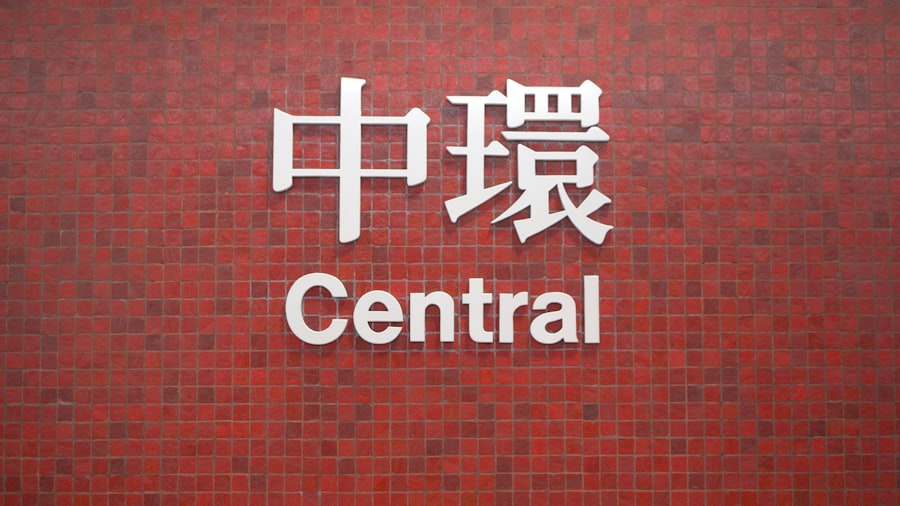As I delve into the world of Content Delivery Networks (CDNs), I find it essential to grasp the fundamental concepts that underpin this technology. A CDN is essentially a network of servers distributed across various geographical locations, designed to deliver web content to users more efficiently. By caching content closer to the end-users, CDNs significantly reduce latency and improve load times.
This is particularly crucial in our fast-paced digital environment, where users expect instant access to information. The architecture of a CDN allows for the seamless delivery of static assets like images, videos, and stylesheets, ensuring that these resources are served from the nearest server rather than the origin server, which may be located far away. Moreover, I appreciate how CDNs enhance the reliability and availability of web services.
In the event of a server failure or high traffic spikes, a CDN can reroute requests to other servers within its network, ensuring that users experience minimal disruption. This redundancy is vital for maintaining a positive user experience and can significantly impact a website’s performance metrics. Understanding these basics not only helps me appreciate the technology but also prepares me for deeper exploration into how I can leverage CDNs for my own projects.
Key Takeaways
- A CDN (Content Delivery Network) is a network of servers distributed geographically to deliver web content more efficiently to users.
- When choosing a CDN, consider factors such as geographic coverage, performance, security, and pricing to meet your specific needs.
- Configuring your CDN for optimal performance involves setting up caching rules, optimizing content delivery, and implementing security measures.
- Integrating your CDN with your website or application requires updating DNS settings, configuring SSL, and ensuring proper content delivery.
- Leveraging caching and content optimization techniques such as minification, compression, and image optimization can significantly improve website performance.
Choosing the Right CDN for Your Needs
When it comes to selecting a CDN, I realize that my specific requirements play a pivotal role in the decision-making process. There are numerous providers in the market, each offering unique features and pricing structures. To make an informed choice, I first assess my website’s traffic patterns and geographical audience distribution.
For instance, if my primary users are concentrated in a specific region, I might prioritize a CDN with strong local presence and peering agreements in that area. Conversely, if my audience is global, I would look for a provider with a vast network of edge servers spread across multiple continents. Additionally, I consider the types of content I need to deliver.
Some CDNs specialize in video streaming or large file transfers, while others excel in delivering static content like images and scripts. I also take into account factors such as security features, customer support, and integration capabilities with my existing infrastructure. By carefully evaluating these aspects, I can choose a CDN that not only meets my current needs but also has the potential to scale as my website grows.
Configuring Your CDN for Optimal Performance

Once I’ve selected a CDN provider, the next step involves configuring it for optimal performance. This process can be intricate, but I find it rewarding as I see immediate improvements in my website’s speed and reliability. The first aspect I focus on is setting up caching rules.
By determining which content should be cached and for how long, I can ensure that frequently accessed resources are served quickly from the edge servers. This not only reduces load on my origin server but also enhances user experience by minimizing wait times. Another critical configuration step is enabling features such as HTTP/2 and Brotli compression.
These technologies can significantly improve data transfer speeds and reduce bandwidth usage. Additionally, I pay attention to SSL/TLS settings to ensure secure connections for my users. Properly configuring these elements allows me to maximize the benefits of my CDN while maintaining a secure environment for my visitors.
Integrating Your CDN with Your Website or Application
Integrating my chosen CDN with my website or application is an exciting phase in this journey. The integration process typically involves updating DNS settings to point to the CDN provider and modifying links to static assets so they are served from the CDN rather than directly from my origin server. This step is crucial as it ensures that all requests for static content are routed through the CDN, allowing me to take full advantage of its caching capabilities.
I also explore various integration methods offered by my CDN provider. Many CDNs provide plugins or modules for popular content management systems (CMS) like WordPress or Joomla, making the integration process smoother and more efficient. Additionally, I consider using APIs provided by the CDN for more customized solutions tailored to my specific needs.
This flexibility allows me to create a seamless experience for my users while leveraging the power of the CDN effectively.
Leveraging Caching and Content Optimization
As I continue to work with my CDN, I realize that caching and content optimization are key components in enhancing performance further. Caching strategies can vary widely depending on the type of content being served. For instance, static assets like images and stylesheets can be cached for longer durations compared to dynamic content that may change frequently.
By implementing cache-control headers effectively, I can instruct the CDN on how long to store different types of content before checking back with the origin server. In addition to caching strategies, I also focus on optimizing my content before it reaches the CDN. This includes compressing images without sacrificing quality and minifying CSS and JavaScript files to reduce their size.
By optimizing these assets, I not only improve loading times but also decrease bandwidth usage, which can lead to cost savings over time. The combination of effective caching and content optimization allows me to create a faster, more efficient web experience for my users.
Monitoring and Analyzing Your CDN Performance

Monitoring and analyzing the performance of my CDN is an ongoing process that I find invaluable. Most CDN providers offer robust analytics tools that allow me to track key performance indicators such as load times, cache hit ratios, and bandwidth usage. By regularly reviewing these metrics, I can identify areas for improvement and make data-driven decisions about my CDN configuration.
I also pay attention to user feedback regarding site performance. If users report slow loading times or other issues, I investigate whether these problems stem from the CDN or other factors within my website’s architecture. By combining quantitative data from analytics with qualitative insights from user experiences, I can gain a comprehensive understanding of how well my CDN is performing and make necessary adjustments accordingly.
Scaling and Managing Your CDN as Your Traffic Grows
As my website gains traction and traffic increases, scaling my CDN becomes a priority. One of the advantages of using a CDN is its inherent ability to handle spikes in traffic without compromising performance. However, I must remain proactive in managing this growth effectively.
This involves regularly reviewing my CDN plan to ensure it aligns with my current traffic levels and anticipated growth. I also explore additional features offered by my CDN provider that can help manage increased traffic loads more efficiently. For instance, some CDNs offer advanced load balancing options or automatic scaling capabilities that can dynamically adjust resources based on real-time demand.
By leveraging these features, I can ensure that my website remains responsive even during peak traffic periods.
Best Practices for Maintaining and Updating Your CDN
Maintaining and updating my CDN is crucial for ensuring its continued effectiveness over time. One best practice I adhere to is regularly reviewing and updating caching rules based on changes in content strategy or user behavior. As new assets are added or existing ones are modified, it’s essential to adjust cache settings accordingly to avoid serving outdated content.
Additionally, I stay informed about updates from my CDN provider regarding new features or improvements that could enhance performance or security. Regularly revisiting my integration setup ensures that I’m taking full advantage of any advancements in technology that could benefit my website. By committing to ongoing maintenance and updates, I can maximize the value of my CDN investment while providing an optimal experience for my users.
In conclusion, navigating the world of CDNs has been an enlightening journey for me. From understanding the basics to choosing the right provider and optimizing performance, each step has contributed to enhancing my website’s efficiency and user experience. As technology continues to evolve, I remain committed to staying informed and adapting my strategies accordingly, ensuring that I leverage CDNs effectively in an ever-changing digital landscape.
When implementing a Content Delivery Network (CDN) effectively, it’s crucial to consider various factors that can influence the performance and speed of your website. One related article that provides valuable insights into optimizing your website’s performance is the guide on using Google PageSpeed Insights. This tool helps identify areas where your website can be improved for faster load times, which is essential when integrating a CDN. For more detailed information, you can read the full article on Google PageSpeed Insights. This resource will help you understand how to analyze and enhance your website’s speed, complementing your CDN implementation strategy.
FAQs
What is a CDN (Content Delivery Network)?
A CDN is a network of servers distributed across various locations to deliver web content more efficiently to users. It helps to reduce latency and improve website performance.
How does a CDN work?
When a user requests content from a website, the CDN delivers the content from the server closest to the user, reducing the distance the data has to travel and improving load times.
What are the benefits of implementing a CDN?
Implementing a CDN can improve website performance, reduce server load, enhance security, and provide better user experience by delivering content faster to users.
What are the key considerations when implementing a CDN effectively?
Key considerations for implementing a CDN effectively include choosing the right CDN provider, optimizing content for caching, ensuring proper integration with existing infrastructure, and monitoring performance.
How can a business measure the effectiveness of a CDN implementation?
Businesses can measure the effectiveness of a CDN implementation by monitoring website performance metrics such as load times, page views, and user engagement, as well as analyzing CDN usage and cost-effectiveness.
